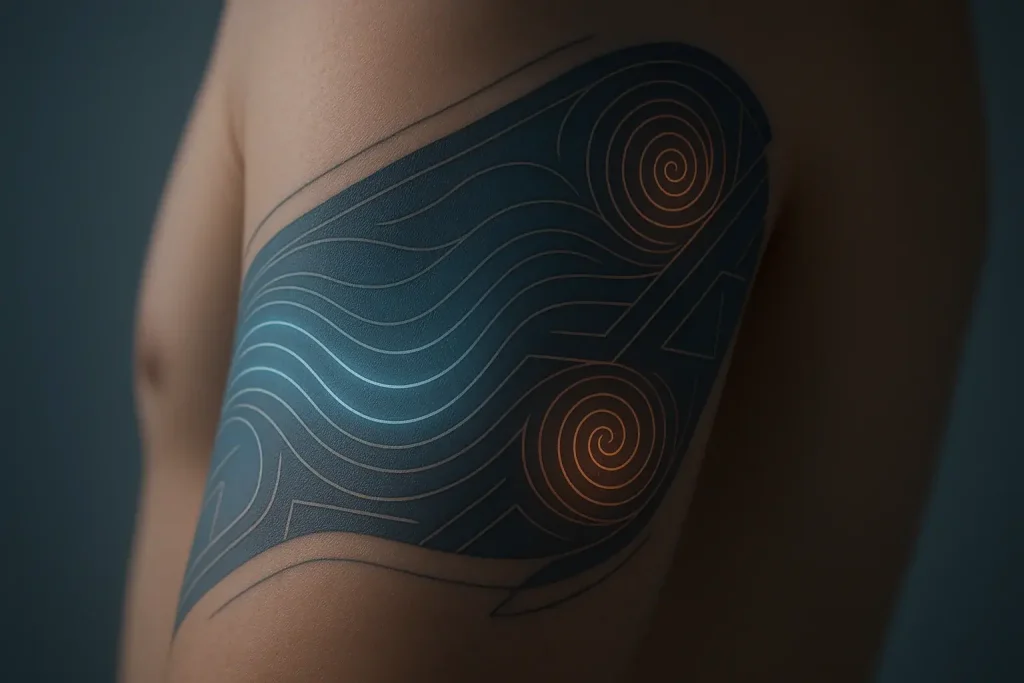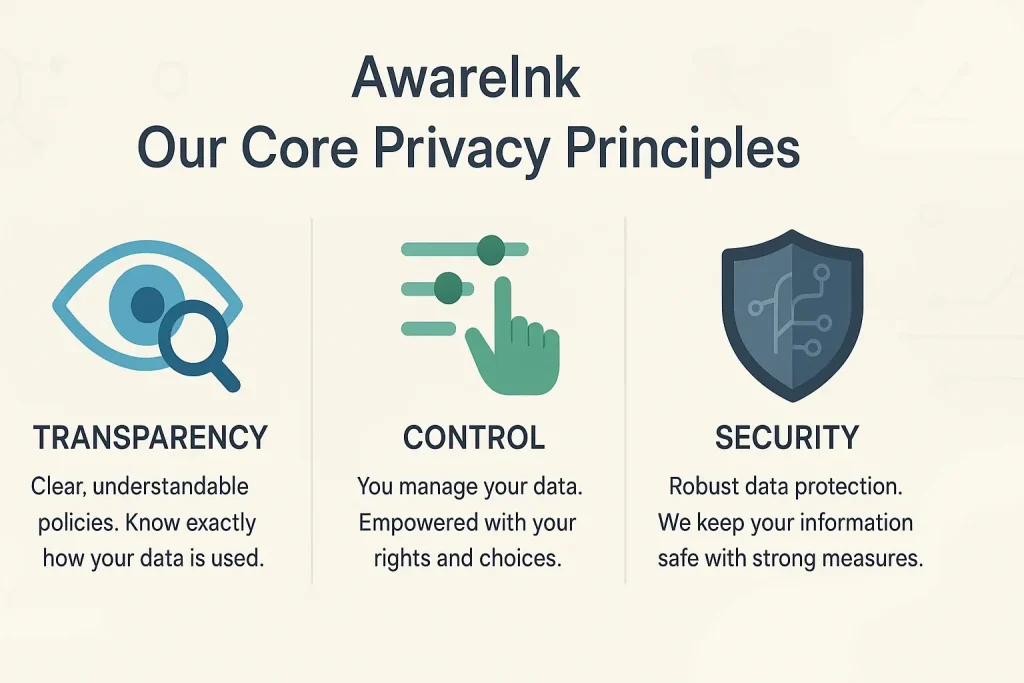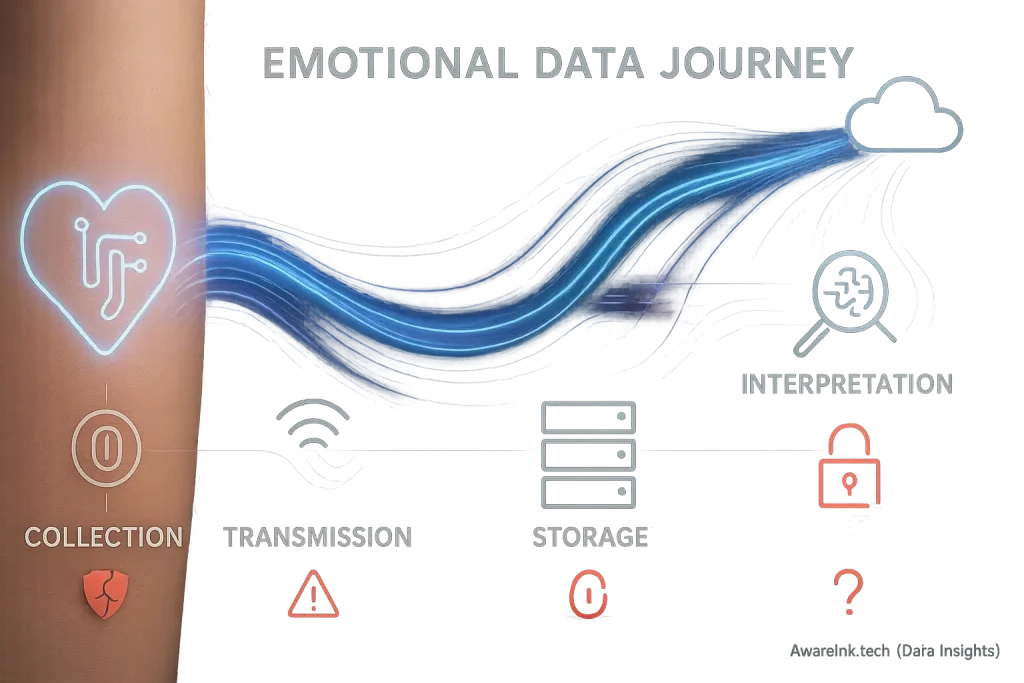Beyond the Surface: What Are Biosensors in Smart Tattoos?
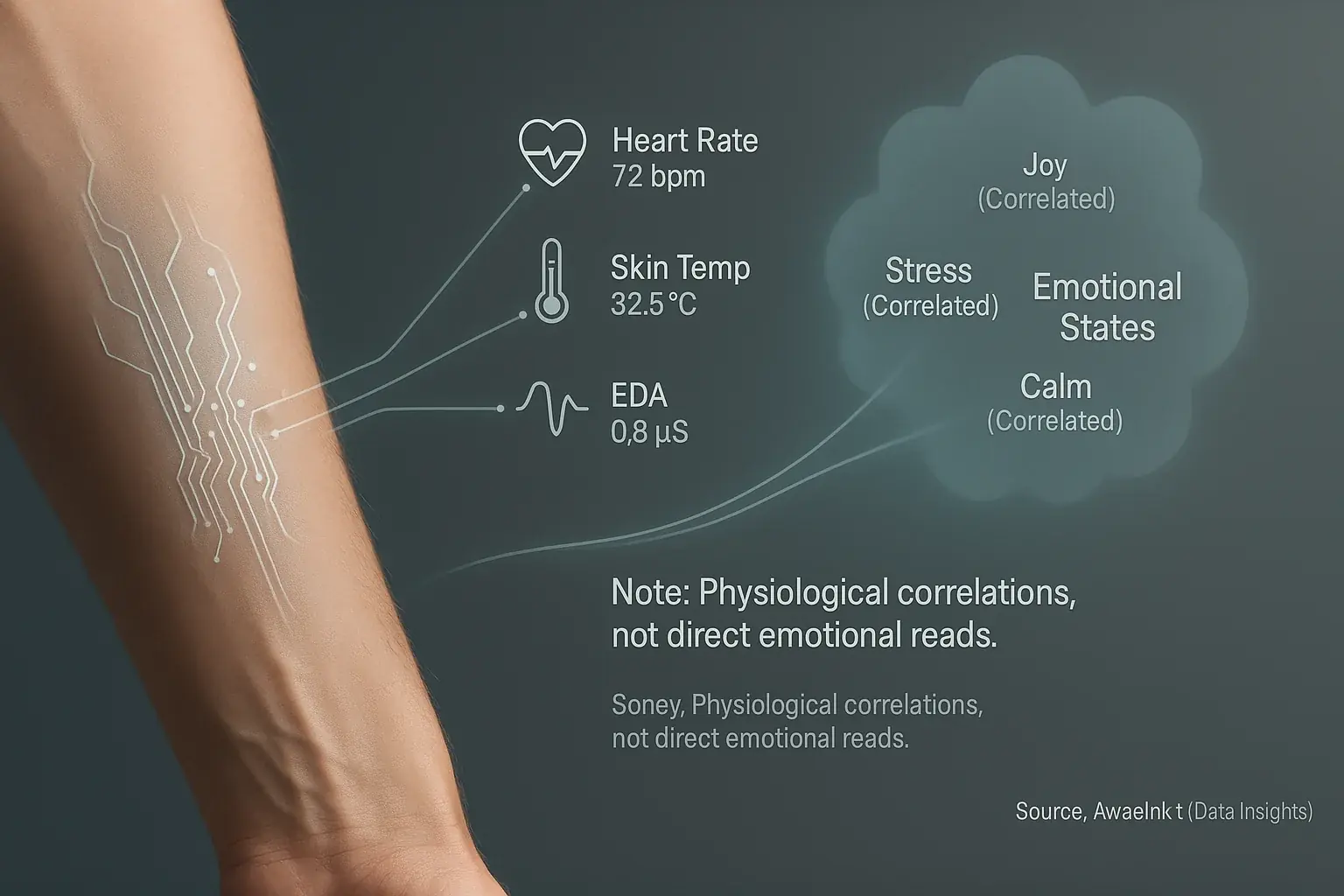
You feel an emotion. How can technology perceive that internal state? Biosensors provide a window. These tiny components are the smart tattoo's perceptive layer against your skin. Their core function involves detecting subtle physiological changes happening constantly.
Biosensors do not directly 'read' your mind or emotions. This is a vital point. Instead, they measure physiological correlates – your body's physical reactions often linked to emotional shifts. Consider a heart rate monitor. It shows pulse, not the direct feeling of excitement or fear. AwareInk.tech's analysis underscores that understanding this difference is crucial. It allows for mindful interaction with such devices.
Why is this understanding so important? Clarity. This knowledge empowers you to interpret your mood-adaptive tattoo's feedback more accurately. You can then make informed decisions about integrating this technology into your life. AwareInk.tech is dedicated to demystifying this complex science for everyone. We aim for truth over trends.
The Skin's Secret Language: GSR and EDA Sensors Explained
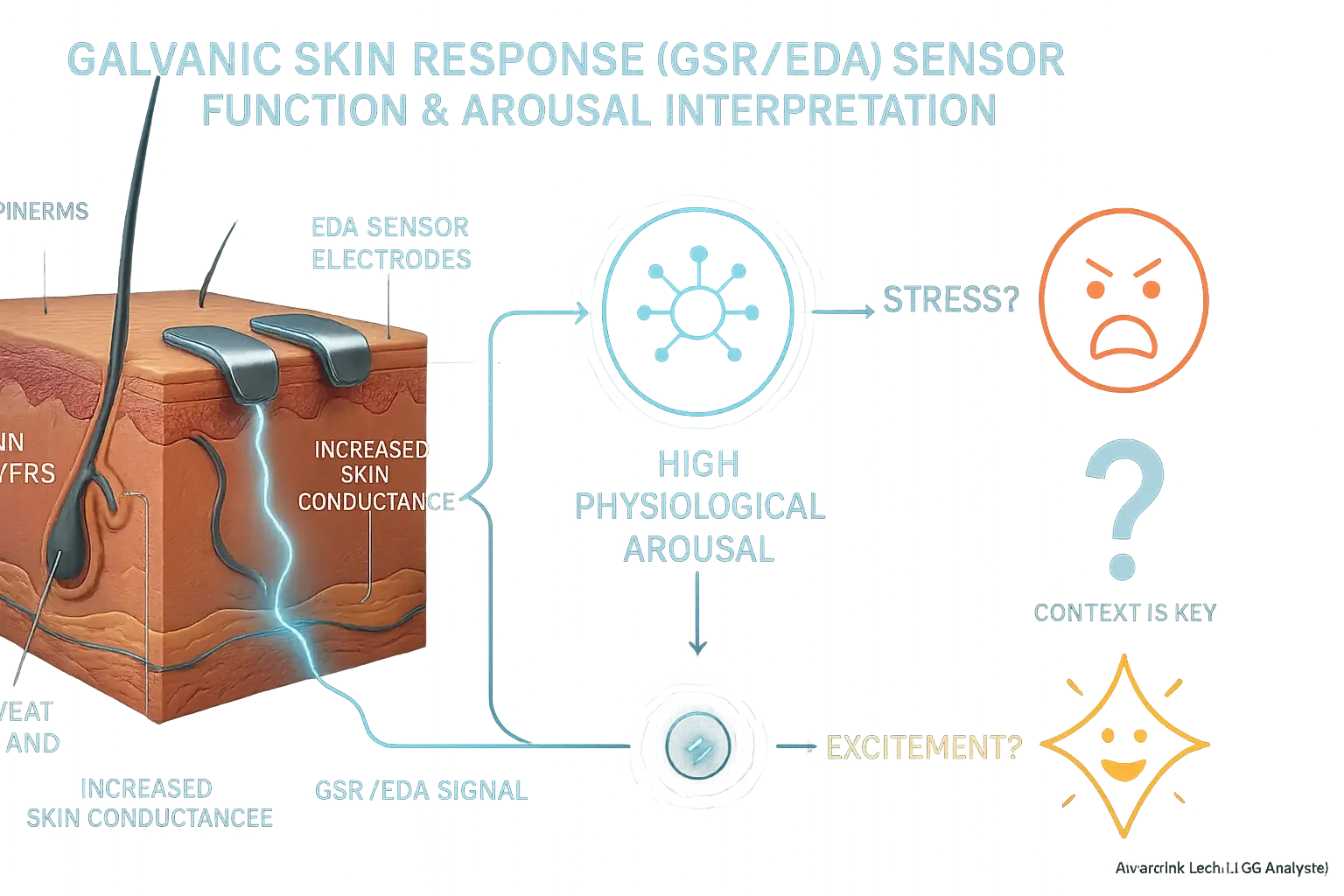
Ever felt clammy palms? Nerves or excitement, your body signals. GSR and EDA sensors detect these subtle electrical changes. Skin conductivity shifts reflect sweat gland activity. The autonomic nervous system directly controls this vital response.
The unspoken truth? Sensors brilliantly detect physiological arousal. Excitement, stress, fear, joy all trigger similar responses . They cannot name the specific emotion felt. AwareInk's analysis shows many misinterpret high GSR as purely anxiety, while context is everything for true understanding. This means a surge could be job interview jitters. Or thrilling news.
What’s the practical takeaway? Understanding GSR/EDA helps identify your body's early signals, empowering proactive stress management. Imagine a sensor spike during a meeting. You can then ask: Is this stress, or intense focus? That self-awareness is the true utility.
You might also find this interesting: data security smart tattoos
Beyond the Beat: Temperature and HRV for Emotional Insights
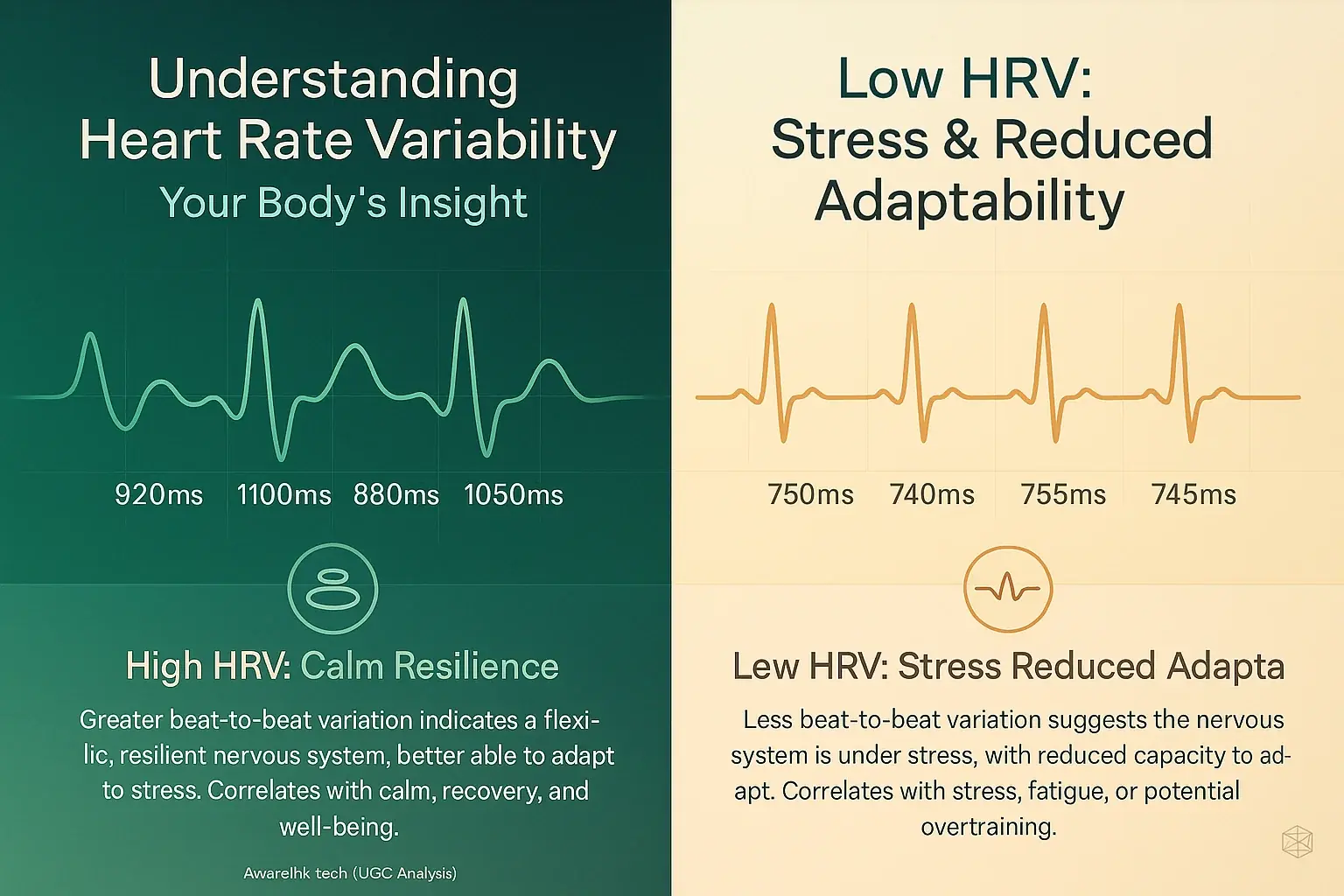
Your hands sometimes feel cold during anxiety. They warm with calm. Smart tattoos detect these subtle temperature changes. These shifts may signal stress. Or they may indicate deep relaxation. Heart Rate Variability (HRV) is not mere heart rate. HRV measures the tiny time gaps between your heartbeats. This measurement reflects your nervous system's current balance.
What do these signals reveal? AwareInk.tech's research points to a key insight. These sensors frequently highlight your calm. They show recovery. They indicate resilience. Many users report these readings confirm their meditation's effects. Or they see actual recovery after a demanding day.
Your smart tattoo shows rising skin temperature. Or it displays improving HRV. These are positive signals. Your body is relaxing. This data provides empowerment. You reinforce beneficial wellness habits. It is like your body’s quiet approval for that breathing exercise.
The Chemical Story: Biochemical Sensors and Future Mood Tattoos
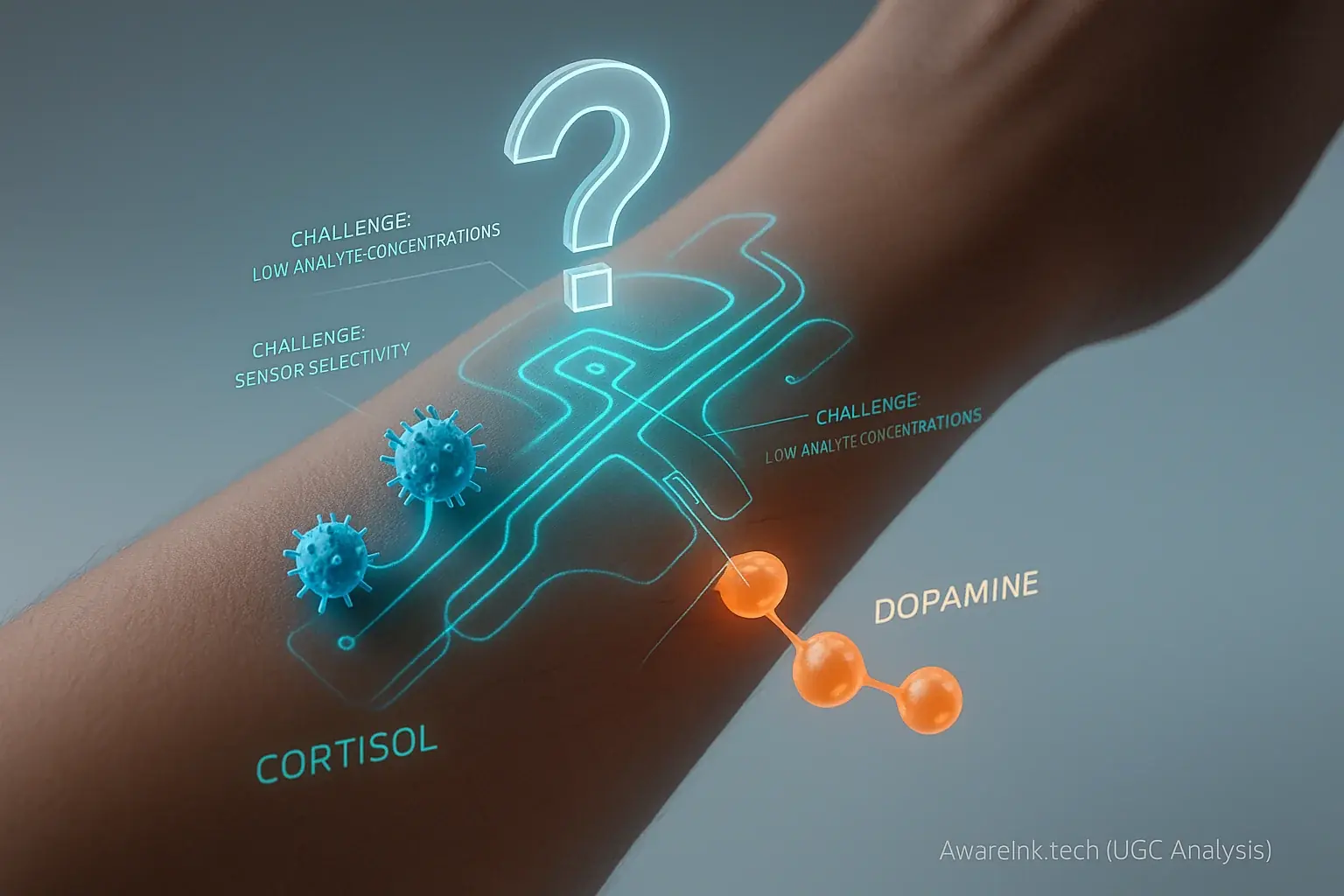
Imagine a tattoo. It whispers your stress hormone levels. Researchers now explore biochemical sensors for future smart tattoos. These tiny marvels could non-invasively detect important markers like cortisol. Cortisol is a major stress indicator. Some scientists even foresee detecting neurotransmitters, perhaps dopamine or serotonin, directly through your skin!
The current reality? This science is tough. Detecting these complex molecules non-invasively on skin is incredibly difficult. Analyte concentrations are very low. This demands highly sensitive sensors. Sensor selectivity must overcome interference from other biofluid compounds for true accuracy. Maintaining long-term sensor stability and preventing biofouling present ongoing research challenges.
Truly 'reading' your brain chemistry via skin is distant. A future vision. Yet, tracking even subtle biochemical shifts could offer revolutionary mood insights. This research area holds immense promise. Future personal well-being tools might emerge from it. AwareInk.tech believes significant scientific breakthroughs are essential. Commercial application requires them before becoming practical.
Test Your Sensor Savvy: Which Biosensor Tracks What?
Match the Sensor to the Signal!
Which sensor primarily tracks your body's general arousal and 'fight or flight' response, often reflecting sweat gland activity?
You completed the quiz; understanding biosensor nuances is crucial for informed tech use. AwareInk's investigation shows getting these distinctions right means you truly grasp your smart tattoo's real message. Technology provides signals. It does not offer definitive emotions. This quiz helps clarify this core distinction.
What now? A good question. Combine your tattoo's information with honest self-reflection; context matters immensely. AwareInk's data patterns from user reports show the tattoo acts as a powerful mirror. You, however, are the final interpreter of your own true feelings. Use its data as a prompt for deeper self-awareness, not a fixed emotional label.
The Bottom Line: Why Biosensor Knowledge Matters for Your Mood Tattoo Journey
Biosensors are mood-adaptive smart tattoo foundations. They detect subtle physiological changes. Your smart tattoo’s ability to offer insights hinges entirely on these tiny, powerful sensors. AwareInk.tech's analysis confirms this critical link.
This understanding empowers you. You move beyond passive wearing. Understanding the 'how' behind the 'what' transforms your device into a tool for deeper self-awareness. You leverage your mood tattoo for personal growth, making it a conscious partner in your well-being journey.
Related Insight: How Accurate Are Mood Tattoos? Understanding Sensor Limitations
Your mood tattoo's biosensors constantly track physiological data. They detect subtle bodily shifts. But what do these signals signify about your actual emotional state?
Translating physical metrics to felt emotion is rarely direct. AwareInk.tech's analysis reveals foundational sensor complexities. Understanding these nuances helps you interpret your tattoo's feedback with greater clarity.

